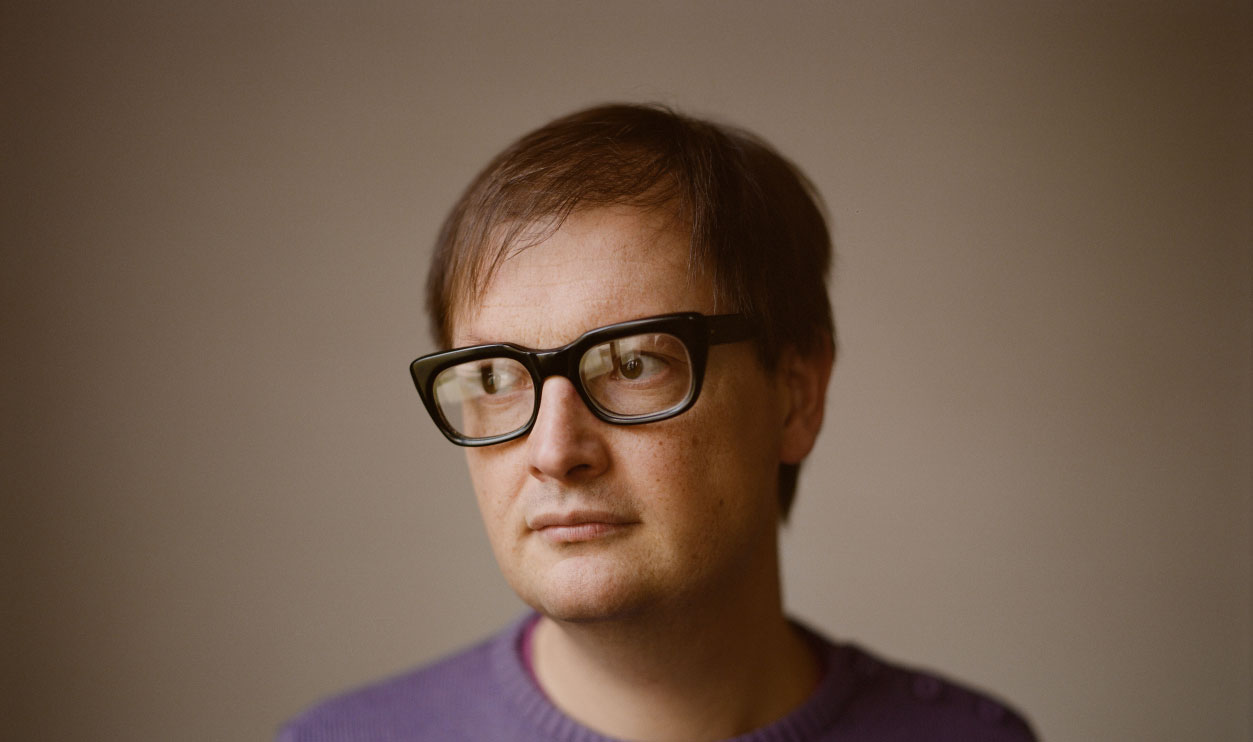Etienne Jaumet

Who knows Etienne Jaumet? His name might still be unknown… but his face doesn’t leave anyone indifferent: you only need to see him once on stage, shimmering and tense, surrounded by anolog machinery, synthesisers, sequencers and drum machines, to then recognise him anywhere.
With Etienne being one half of Zombie Zombie, the band’s first album is still its last. Until they record a second one (the other half of Zombie Zombie is busy with his other band Herman Dun...
Who knows Etienne Jaumet? His name might still be unknown… but his face doesn’t leave anyone indifferent: you only need to see him once on stage, shimmering and tense, surrounded by anolog machinery, synthesisers, sequencers and drum machines, to then recognise him anywhere.
With Etienne being one half of Zombie Zombie, the band’s first album is still its last. Until they record a second one (the other half of Zombie Zombie is busy with his other band Herman Dune), Etienne Jaumet has embarked on a passionate new adventure: making music on his own, with his instruments as only companions.
It was precisely upon the suggestion of the head of French label Versatile – Gilbert, that Etienne composed his first solo track and gave birth to the 15 minute ‘Repeat Again After Me’ (beautifully remixed by the Germans, Ame), a prelude to an eponymous album. A bit like when Klaus Schulze released his first solo album in the early ’70s when he was still officially in Ash Ra Tempel. The comparison with the ’70s doesn’t end there: Etienne composed this album with that decade in mind, or rather with the way records were made then, thinking of both sides of the record, both movements. This is why his record is made of five tracks. The first is 20 minutes long and is the entire A side, while the other, shorter tracks are on the flipside. That was his way of making the ’70s live on, but without insisting too much on the nostalgia of it all. At first listen you will immediately hear the urgency, contemporary and immediacy of the record.
Etienne plays all the instruments: rhythm machine, synthesiser, effects, and saxophone (the instrument he played initially in indie bands like The Married Monk. This is where he comes from… but how far he has come). He makes everything come together on the moment, each track being recorded in one take, to preserve the moment, the inspiration, the energy and the insanity as well. Because there is also a good dose of madness in all this.
Etienne Jaumet and his machines and instruments tell real stories, like little sonic landscapes, and he has been helped along the way by two big figures. The first is Carl Craig, who, blown away by Etienne’s demos, accepted to produce and mix the album, whilst keeping the entire original tracks intact – only adding effects, taking a few things away here and there, in order to only keep the bare essentials and accentuate the psychedelic feel of the original tracks. His work can be compared to that of a picture framer, illuminating and highlighting an already beautiful image. In turn, a French music legend appeared: the singer and harpist Emmanuelle Parrenin contributed her harp to Etienne’s sounds – she plays the stellar notes that conclude ‘For Falling Asleep,’ and she also lays her voice on the synthesised sounds, mixing and blending them together in a cosmic abstraction.
Upcoming Etienne Jaumet gigs
| 20 March 2026 | Etienne Jaumet | La Grange à Musique (GAM) | Creil | France |